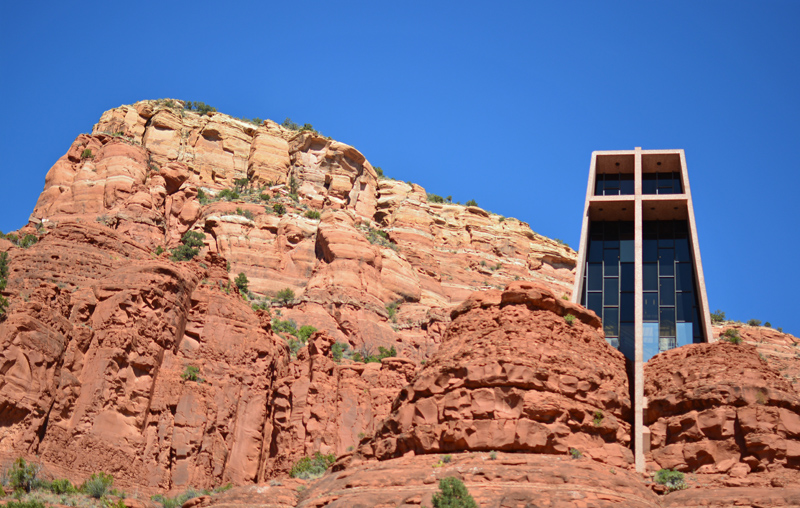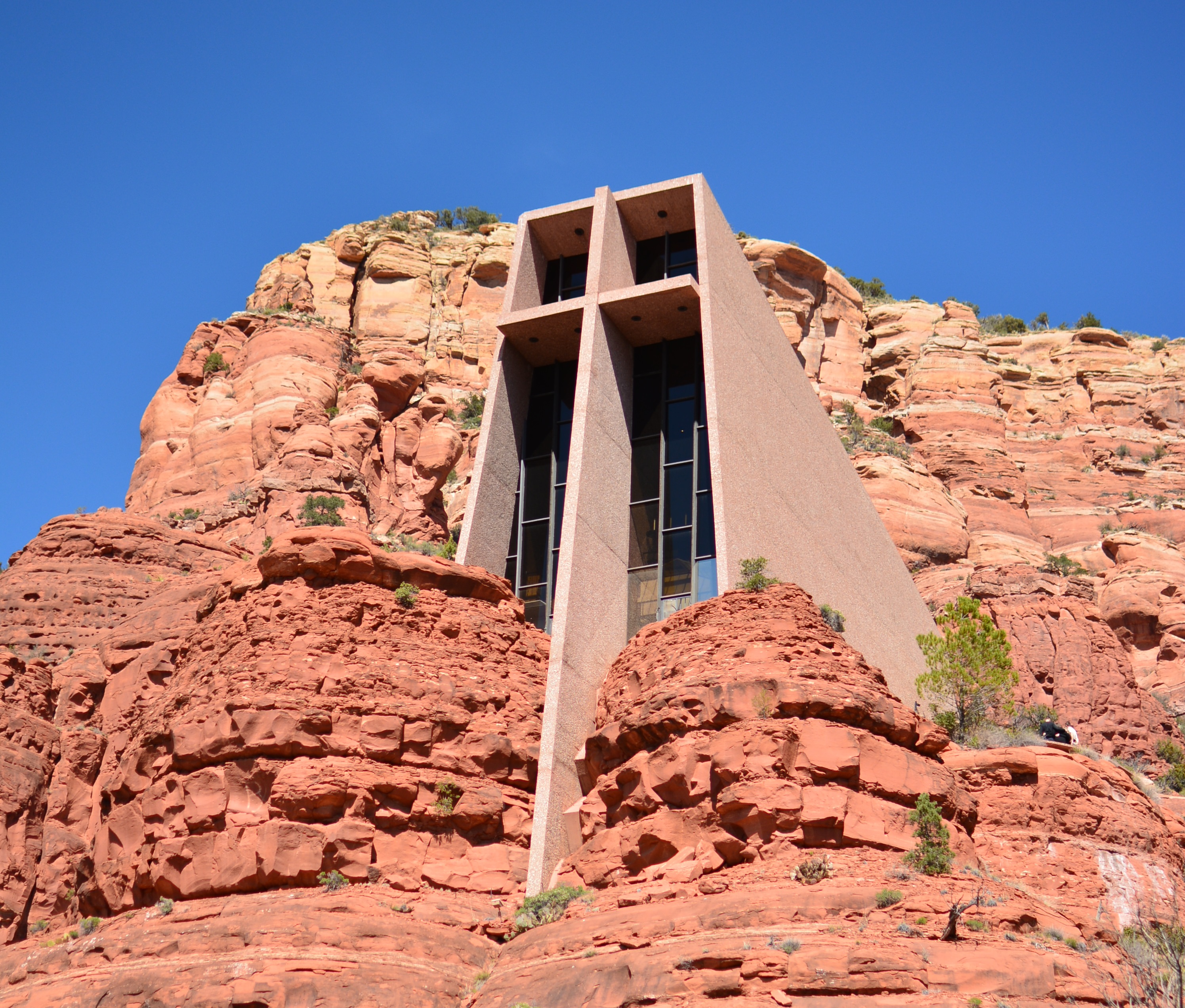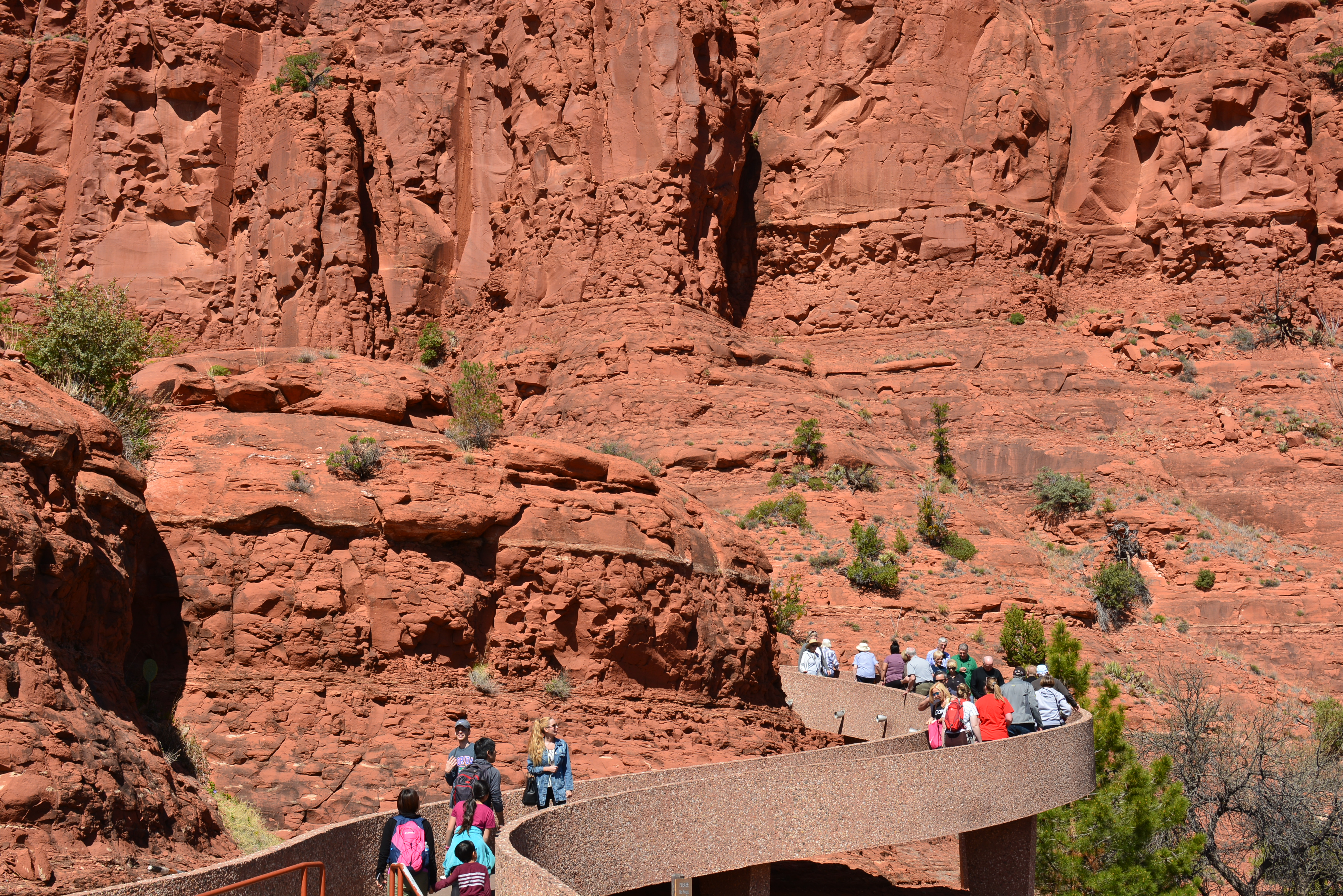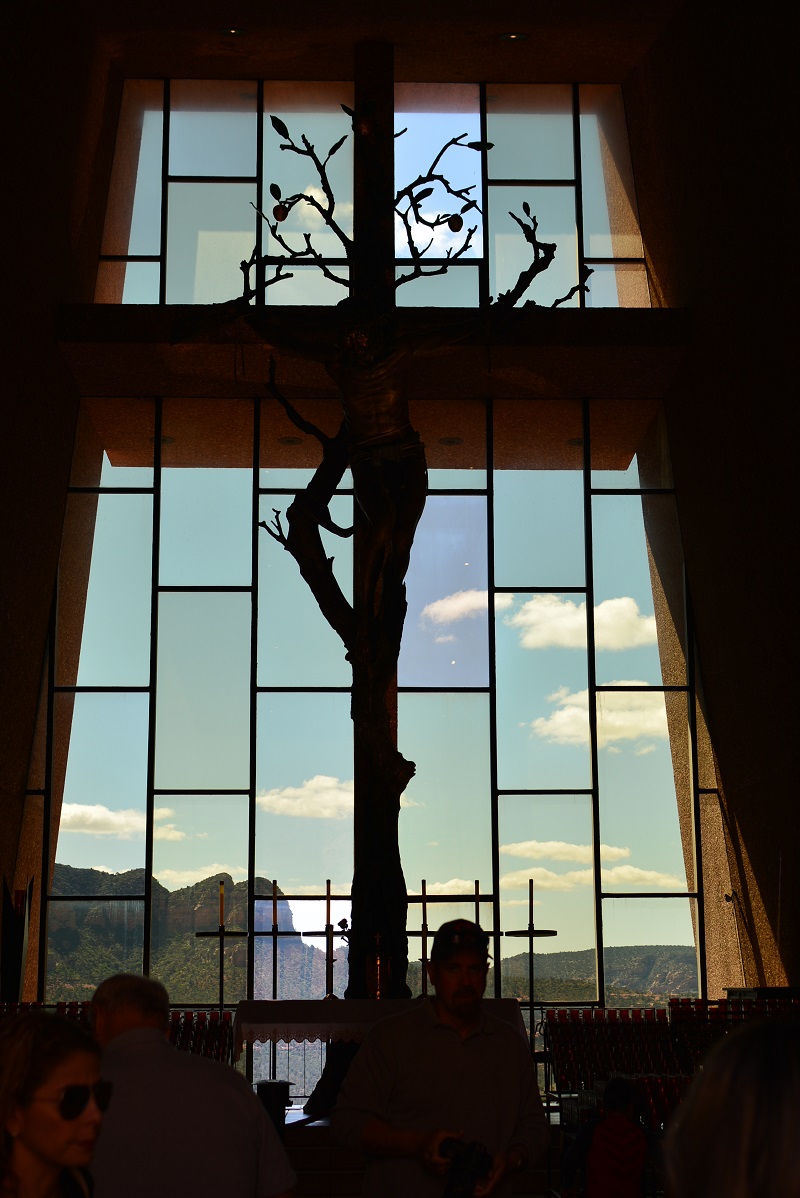Chapel of the Holy Cross, Sedona

|
| All images copyright George Demetri |
Contents |
[edit] Introduction
Set amid the towering red sandstone buttes of Sedona, Arizona, the Chapel of the Holy Cross is a reinforced concrete structure completed in 1956. It was the brainchild of sculptor and local rancher Marguerite Brunswig Staude who, in 1932, perceived a cross when looking at the newly-completed Empire State Building in New York.
Her initial sketch, which she showed to Lloyd Wright (son of architect Frank Lloyd Wright) was of a building which was cruciform in plan and elevation. Wright was said to be ‘struck’ by the idea and together they devised a modern 150m-high ‘skyscraper cathedral’ clad in glass and featuring an articulated cross.
Wright’s model and plans were to be used as the basis for a building overlooking the Danube in Budapest, Hungary. However, with the start of the Second World War in 1939, Staude’s dream was temporarily thwarted.
Undeterred, she subsequently decided to build near her ranch in Oak Creek Canyon, Arizona, which offered various dramatic sites for the proposed chapel. Together with architect Anshen & Allen, they decided upon a twin-pinnacled spur 80m-high jutting out of a 300m rock wall which Staude described as being as “solid as the rock of Peter”.
However, because the land was government property, an act of Congress was necessary to obtain a deed and permission to build. These were obtained thanks to the intervention of senator Barry Goldwater.
By 1954, the drawings and technical specifications for the chapel were completed and in April 1955, the William Simpson Construction Company broke ground. Following its completion in 1956 at a cost of $300,000, the building received the 1957 Award of Honor accolade from the American Institute of Architects.

|
[edit] Construction
The building has sloping 300mm-thick sandblasted, course-aggregate, reinforced concrete walls and a sloping roof which result in trapezoidal elevations. Their solidity contrasts with the lightness of the grey-tinted glass on the front and rear elevations which flood the chapel with light.
On the front elevation the main feature is the 27.4m-high reinforced concrete cross which serves both structural and aesthetic functions. On the interior, the cross supports both the altar and the Corpus.
From the car park at the rear of the building, a long, snaking textured concrete ramp leads visitors to the main entrance which is mostly glazed apart from the aluminium doors. The effect of the sloping roof is to reduce the entrance height to a more human scale.
Able to accommodate up to 150 people, the chapel interior comprises a simple palette of concrete walls and polished concrete floor. The surrounding geological formations can be seen through the smoked glass which also serves to reduce glare. A staircase adjacent to the entrance leads down to a shop, confessional, office, two sacristies and services.
[edit] Sculptor and architect collaboration
Staude wrote subsequently of the chapel: “The accomplishment of this dream was made possible when sculptor and architect meet on common ground. The sculptor then became the donor and passed on her vision to the architect who sublimated it in terms of transcendental form. It is now a monolith with the Christian connotation of the one cross...organic to the structure.”
Although of the Catholic faith, Staude intended the chapel to have universal appeal, with its doors “ever...open to one and all, regardless of creed”.
In 2007, the Chapel of the Holy Cross was voted by Arizonans as being one of the Seven Man-Made Wonders of Arizona.
[edit] Related articles on Designing Buildings Wiki
Featured articles and news
Architects, architecture, buildings, and inspiration in film
The close ties between makers and the movies, with our long list of suggested viewing.
SELECT three-point plan for action issued to MSPs
Call for Scottish regulation, green skills and recognition of electrotechnical industry as part of a manifesto for Scottish Parliamentary elections.
UCEM becomes the University of the Built Environment
Major milestone in its 106-year history, follows recent merger with London School of Architecture (LSE).
Professional practical experience for Architects in training
The long process to transform the nature of education and professional practical experience in the Architecture profession following recent reports.
A people-first approach to retrofit
Moving away from the destructive paradigm of fabric-first.
International Electrician Day, 10 June 2025
Celebrating the role of electrical engineers from André-Marie Amperè, today and for the future.
New guide for clients launched at Houses of Parliament
'There has never been a more important time for clients to step up and ...ask the right questions'
The impact of recycled slate tiles
Innovation across the decades.
EPC changes for existing buildings
Changes and their context as the new RdSAP methodology comes into use from 15 June.
Skills England publishes Sector skills needs assessments
Priority areas relating to the built environment highlighted and described in brief.
BSRIA HVAC Market Watch - May 2025 Edition
Heat Pump Market Outlook: Policy, Performance & Refrigerant Trends for 2025–2028.
Committing to EDI in construction with CIOB
Built Environment professional bodies deepen commitment to EDI with two new signatories: CIAT and CICES.
Government Grenfell progress report at a glance
Line by line recomendation overview, with links to more details.
An engaging and lively review of his professional life.
Sustainable heating for listed buildings
A problem that needs to be approached intelligently.
50th Golden anniversary ECA Edmundson apprentice award
Deadline for entries has been extended to Friday 27 June, so don't miss out!
CIAT at the London Festival of Architecture
Designing for Everyone: Breaking Barriers in Inclusive Architecture.
Mixed reactions to apprenticeship and skills reform 2025
A 'welcome shift' for some and a 'backwards step' for others.


























